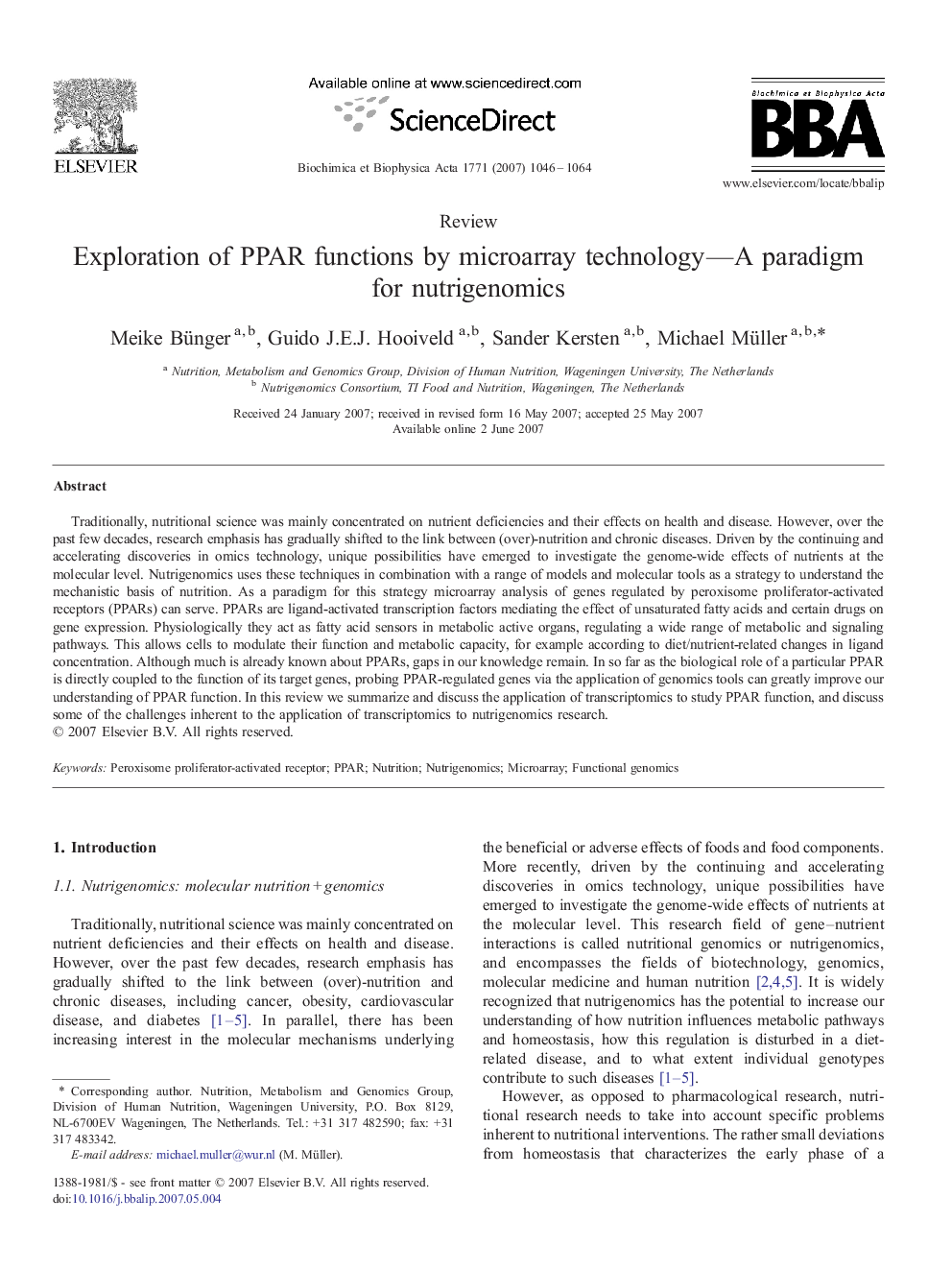| Article ID | Journal | Published Year | Pages | File Type |
|---|---|---|---|---|
| 1950317 | Biochimica et Biophysica Acta (BBA) - Molecular and Cell Biology of Lipids | 2007 | 19 Pages |
Traditionally, nutritional science was mainly concentrated on nutrient deficiencies and their effects on health and disease. However, over the past few decades, research emphasis has gradually shifted to the link between (over)-nutrition and chronic diseases. Driven by the continuing and accelerating discoveries in omics technology, unique possibilities have emerged to investigate the genome-wide effects of nutrients at the molecular level. Nutrigenomics uses these techniques in combination with a range of models and molecular tools as a strategy to understand the mechanistic basis of nutrition. As a paradigm for this strategy microarray analysis of genes regulated by peroxisome proliferator-activated receptors (PPARs) can serve. PPARs are ligand-activated transcription factors mediating the effect of unsaturated fatty acids and certain drugs on gene expression. Physiologically they act as fatty acid sensors in metabolic active organs, regulating a wide range of metabolic and signaling pathways. This allows cells to modulate their function and metabolic capacity, for example according to diet/nutrient-related changes in ligand concentration. Although much is already known about PPARs, gaps in our knowledge remain. In so far as the biological role of a particular PPAR is directly coupled to the function of its target genes, probing PPAR-regulated genes via the application of genomics tools can greatly improve our understanding of PPAR function. In this review we summarize and discuss the application of transcriptomics to study PPAR function, and discuss some of the challenges inherent to the application of transcriptomics to nutrigenomics research.
